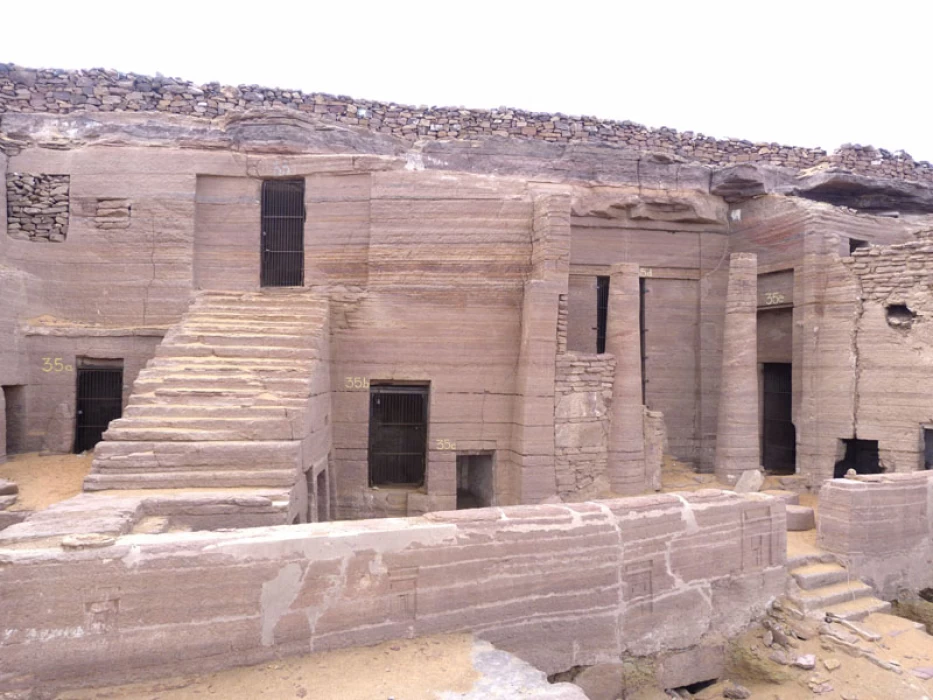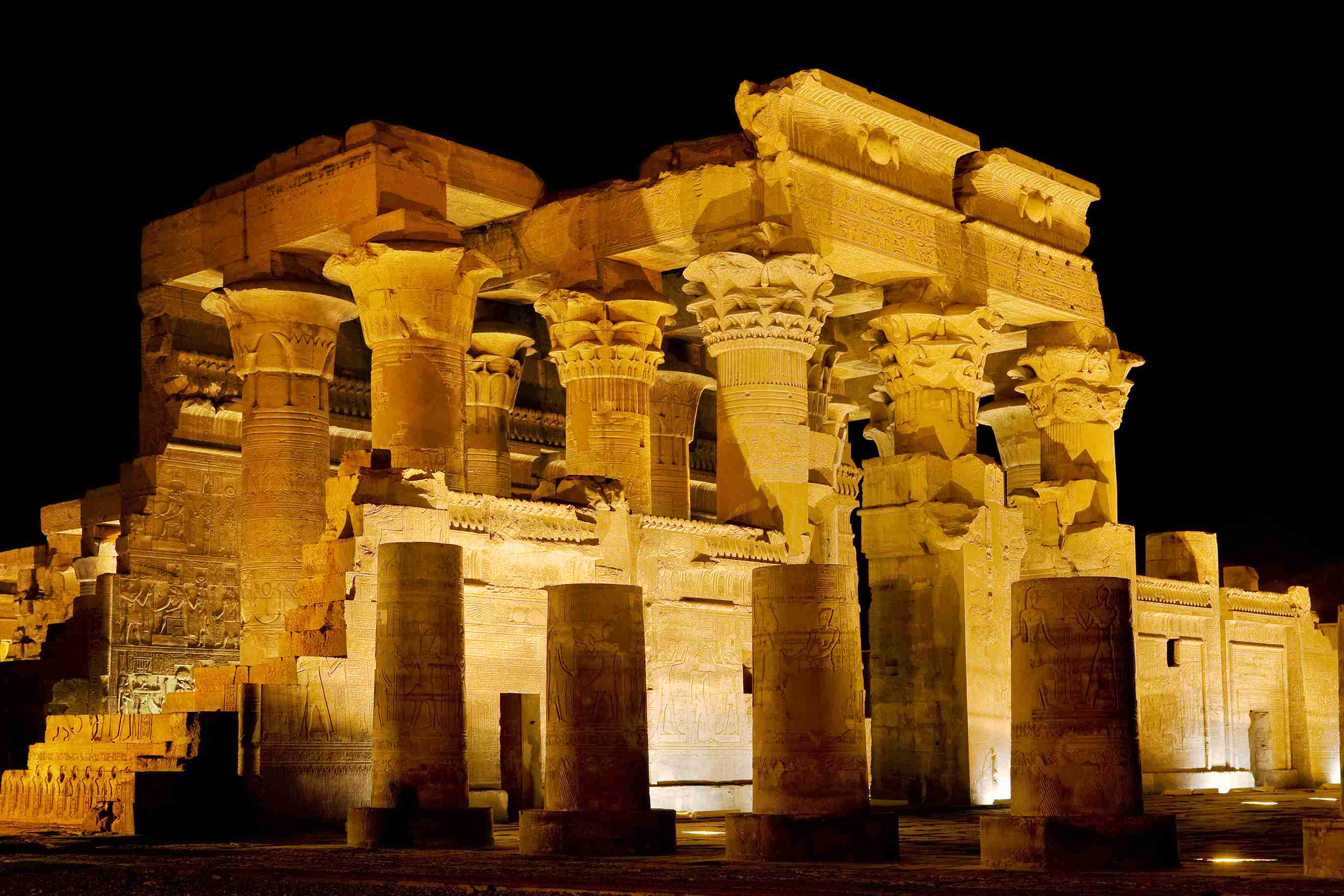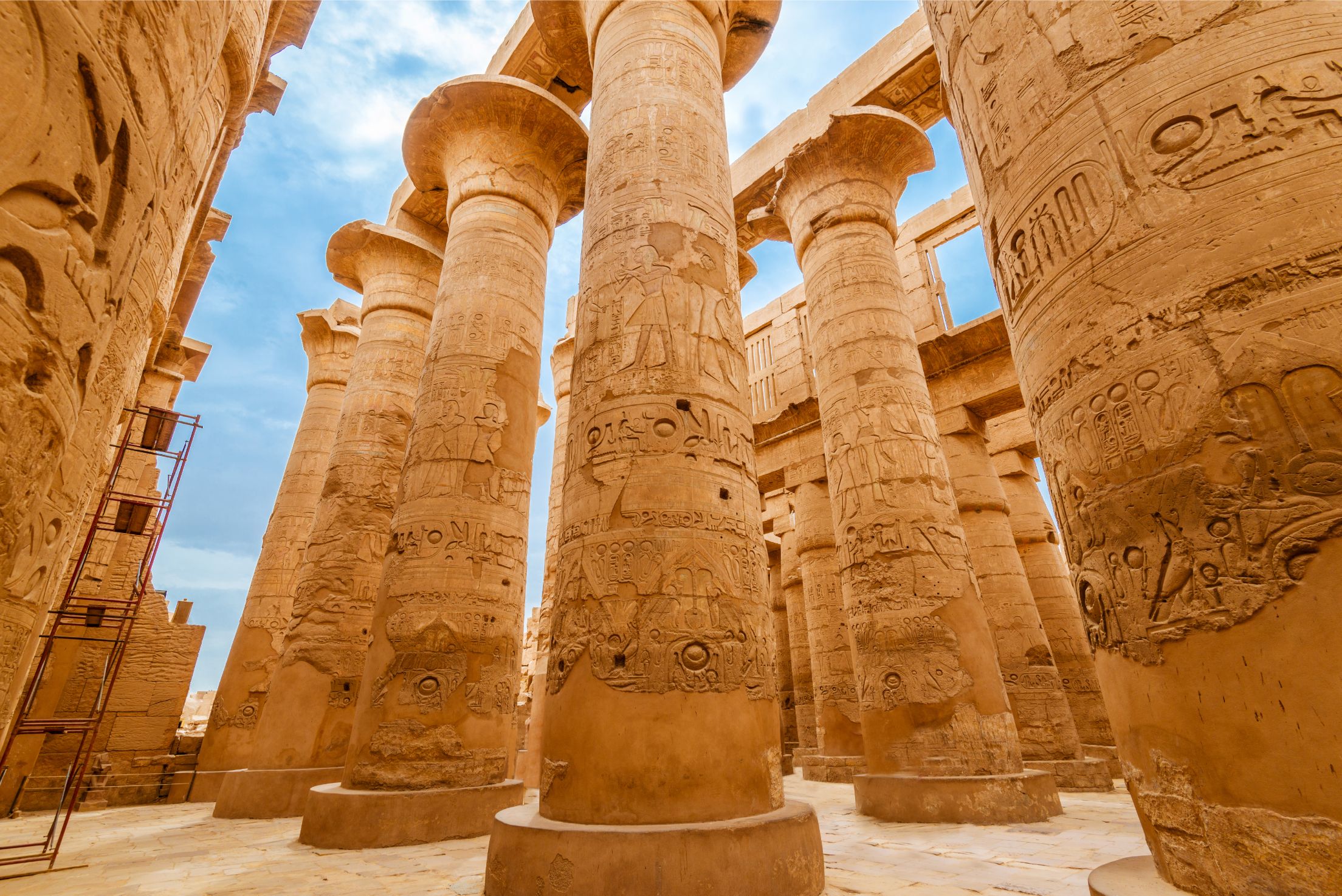
Discover Temples in Aswan
The Tombs of the Nobles one of the Aswan Attractions
The Tombs of the Nobles are located in Aswan and showcase stunning incredible wall paintings and a glimpse into the lives of ancient Egyptian nobility. The Tombs of the Nobles, also known as Qubbet el-Hawa, are a series of ancient Egyptian tombs located on the west bank of the Nile River, just north of Kitchener's Island in Aswan. These tombs were the burial places of high officials, governors, and priests from the Old and Middle Kingdoms, who were responsible for overseeing the southern frontier of Egypt.
What is the meaning of Tombs of the Nobles?
The term "Tombs of the Nobles" refers to a collective term for tombs of high-ranking officials, priests, soldiers, viziers, princes, and other elite members of ancient Egyptian society. These tombs are typically located near major ancient sites in Egypt, such as Luxor, Saqqara, and Aswan.
What to Expect during Visiting The Tombs of the Nobles, Aswan
1- Well-Preserved Wall Paintings:
Many of the tombs are adorned with vibrant wall paintings depicting scenes from daily life, religious rituals, and mythological stories. These paintings offer valuable insights into the beliefs and customs of ancient Egyptians.
2- Architectural Marvels:
The tombs showcase impressive architectural techniques, including intricate carvings and hieroglyphs. Some tombs feature multiple chambers, each with its unique decorations and purpose.
3- Serene Location:
The tombs are situated in a peaceful and picturesque location, offering stunning views of the Nile River and the surrounding desert landscape. Visitors can explore several tombs, each with unique features and decorations. The site offers a quieter alternative to some of the more crowded tourist attractions in Egypt, allowing for a more intimate experience with ancient history.
Historical Significance of Tombs of the Nobles
The Tombs of the Nobles served as the burial site for ancient Egyptian nobles and priests from the Old and Middle Kingdoms. The necropolis was in use from the Fourth Dynasty until the Roman Period, making it a significant site for understanding ancient Egyptian burial practices and social hierarchies.
The tombs are characterized by rock-cut architecture, featuring intricate carvings and paintings that depict scenes from the lives of the deceased, as well as offerings and rituals. The designs reflect the artistic styles of the time and provide insights into the beliefs and customs of ancient Egyptians.
UNESCO World Heritage Site and Tombs of the Nobles
The site is part of the Nubian Monuments from Abu Simbel to Philae, which was inscribed on the UNESCO World Heritage List in 1979. This designation highlights the cultural and historical importance of the site within the broader context of ancient Egyptian civilization.
How many are The Tombs of the Nobles, Aswan
The Tombs of the Nobles (Qubbet el-Hawa) in Aswan consist of a necropolis that served as the burial site for ancient Egyptian nobles and priests. While the exact number of tombs can vary, there are approximately 100 tombs in the necropolis, which were in use from the Fourth Dynasty of Egypt until the Roman Period.
There are six decorated tombs currently open to the public in the Tombs of the Nobles in Aswan. However, the total number of tombs in the necropolis is much larger, and discoveries are still being made.
Popular Tombs of the Nobles to Visit:
- Tomb of Sarenput II: One of the most famous tombs, it features beautiful paintings depicting Sarenput and his family, as well as scenes of hunting and fishing.
- Tomb of Harkhuf: This tomb is known for its unique decorations, including a scene of Harkhuf bringing a dwarf from Punt to the Pharaoh.
1. Tomb of Harkhuf
This tomb is renowned for its well-preserved wall paintings depicting Harkhuf's expedition to Punt, a mysterious land in the Horn of Africa. The vivid colors and intricate details of these paintings offer a fascinating glimpse into ancient Egyptian trade and exploration. Harkhuf was a governor during the Sixth Dynasty, known for his expeditions to Nubia.
- Reliefs: The tomb features intricate reliefs that depict Harkhuf's travels and encounters with foreign lands.
- Inscriptions: Important inscriptions provide insights into trade, diplomacy, and his adventures.
2. Tomb of Sarenput II
Sarenput II was a high official during the 12th Dynasty, and his tomb is one of the most elaborately decorated.
Tomb of Sarenput II: This tomb is another highlight, with its stunningly preserved wall paintings and intricate carvings. The colorful scenes depict Sarenput's life, including hunting, fishing, and religious ceremonies.
During this visit, you will explore:
- Wall Paintings: The tomb is adorned with vibrant wall paintings illustrating daily life, hunting scenes, and offerings to the gods.
- Artistic Detail: The detailed artistry and use of color make this tomb a standout.
3. Tomb of Sabni
Sabni was a nobleman and high-ranking official during the Middle Kingdom. You will enjoy fantastic Carvings of The tomb that include intricate carvings and inscriptions that depict Sabni's life and achievements. This paint explains also Scenes of Daily Life. The artwork provides a glimpse into the social and cultural practices of the time.
Tomb of Mekho
Mekho is associated with another high-ranking official, showcasing the artistic style of the period. You will view Reliefs and Inscriptions. The tomb features beautiful reliefs depicting various activities, including hunting and agriculture. Here you will find also Cultural Insights. The artwork reflects the lifestyle of the elite during the Middle Kingdom.
Visiting the Tombs
Access: Visitors can enter through a small old passageway that leads to a staircase, taking them to an upper open courtyard where the tombs are located. These tombs offer a fascinating glimpse into the lives of ancient Egyptian nobility and their burial practices.
Tips for Visiting:
- With our guide, you will provide valuable insights into the history and significance of the tombs.
- Wear Comfortable Shoes: The terrain can be uneven, so comfortable footwear is essential.
- Bring Water and Sunscreen: The desert climate can be harsh, so it's important to stay hydrated and protected from the sun.
- Respect the Site: Avoid touching the walls or artifacts to preserve them for future generations. By exploring the Tombs of the Nobles, you can gain a deeper understanding of ancient Egyptian culture and history. It's a truly unforgettable experience that will transport you back in time.
- Dress Comfortably: Wear comfortable clothing and shoes, as you will be walking through rocky terrain and uneven surfaces.
- Stay Hydrated: Bring water, especially during the warmer months, as the temperatures in Aswan can be quite high.
Nearby Attractions:
- Philae Temple: A beautiful temple complex dedicated to the goddess Isis, located on an island in the Nile.
- Aswan High Dam: An engineering marvel that created Lake Nasser and transformed the region's agriculture and economy.
Visiting the Tombs of the Nobles:
Its location is suitable for smoothy visits. The Tombs of the Nobles are situated on the west bank of the Nile, easily accessible from Aswan. Visitors can reach the site by boat or by road.
Through Guided Tours, you can gain deeper insights into the history and significance of the tombs. Guides can provide valuable context and help interpret the artwork and inscriptions found within the tombs.
Visiting the Tombs of the Nobles offers a unique opportunity to connect with ancient Egyptian history and explore the rich cultural heritage of Aswan.
By exploring the Tombs of the Nobles, you can gain a deeper understanding of ancient Egyptian culture and history. It's a truly unforgettable experience that will transport you back in time and one of the best hidden Egypt Sightseeing that must not be miss.
Related Articles

Kom Ombo Temple is A Double Dedication
The Temple of Kom Ombo is a unique double temple in the Aswan Governorate. Kom Ombo Temple's strategic location on the Nile River in Aswan makes it a popular stop on Nile cruises between Aswan and Luxor. This convenient location, combined with its unique architectural features and historical significance, makes it a must-visit for any traveler exploring Egypt's ancient wonders.

The Grand Egyptian Museum
Imagine yourself walking amongst the most important artifacts of the Pharaonic era at the Grand Egyptian Museum. As you wander through its vast halls, you'll be transported back in time, surrounded by treasures that have witnessed the rise of civilizations.

Karnak Temple: A Marvel of Ancient Egyptian Architecture
The Karnak Temple Complex, located in Luxor, Egypt, is one of the world's largest and most impressive temple complexes dedicated to the god Amun, his wife Mut, and their son Khonsu. This vast complex, covering an area of 200 hectares, is a testament to the power and grandeur of ancient Egyptian civilization. It is a testament to the ancient Egyptians' architectural prowess and religious devotion.